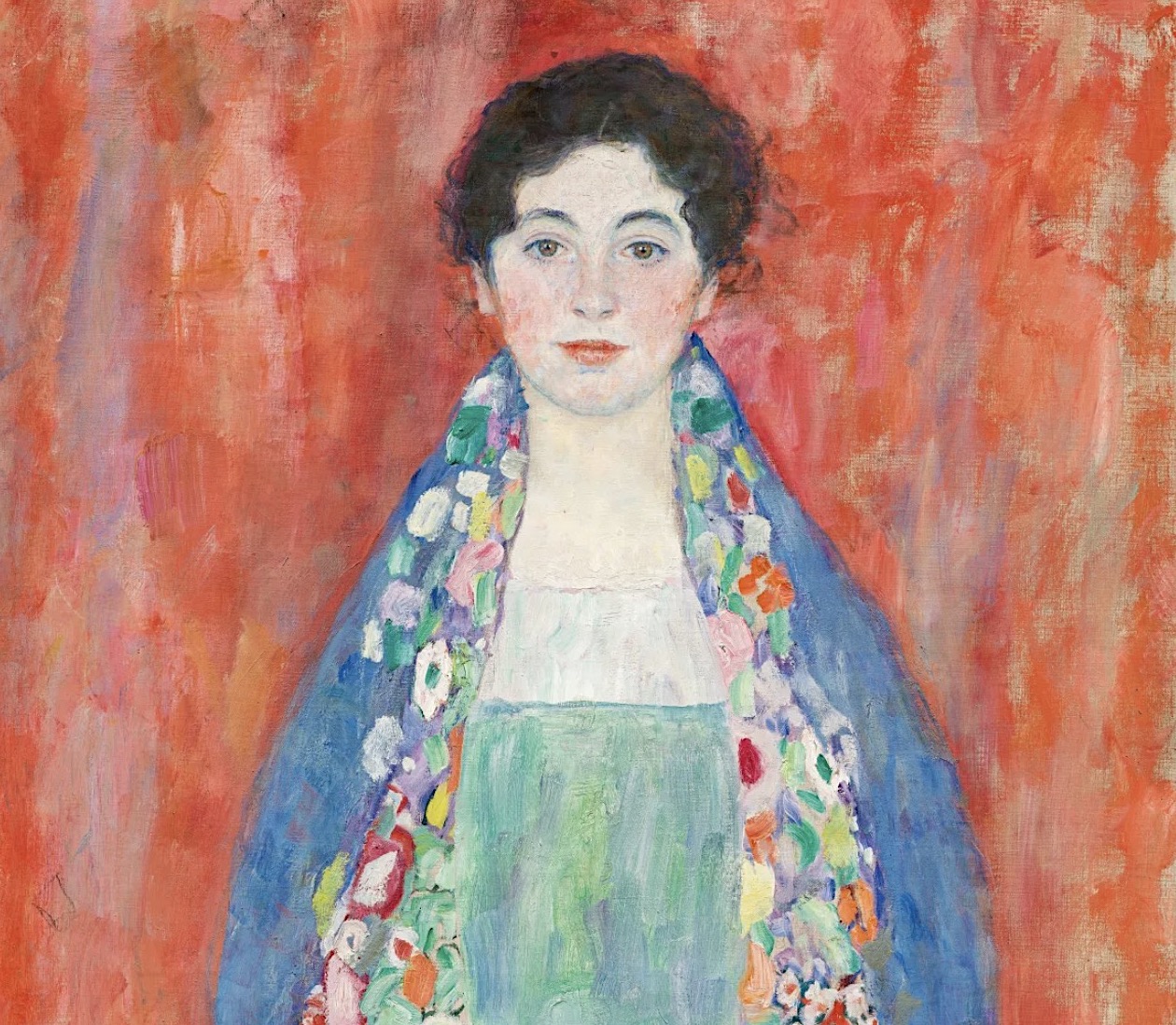A late portrait by Gustav Klimt, shrouded in mystery and steeped in history, has captivated the art world with its recent sale at Im Kinsky in Vienna. It fetches a staggering hammer price of €30 million (€35 million with fees) and sets a new auction record for Austria.
Entitled Portrait of Fräulein Lieser (1917), the painting’s emergence from obscurity was hailed as nothing short of a sensation by the Vienna auction house. Previously known only through a black-and-white photograph and long believed lost, the portrait resurfaced around 16 months ago when Im Kinsky received an unexpected call from the consignor.
While the sale price fell within the lower end of the estimated range of €30 million to €50 million, it still marked a significant milestone, surpassing the previous Austrian record set in 2010 by over fourfold. This landmark achievement underscores the enduring allure of Klimt’s oeuvre. The all-time record for a Klimt at auction stands at £85.3 million (including fees), set last June at Sotheby’s in London with the sale of Dame mit Fächer (Lady with a Fan, 1917).
Im Kinsky’s Klimt expert, Claudia Mörth-Gasser, expressed delight and a sense of expectation at the outcome, emphasizing the portrait’s enigmatic appeal. Yet, questions surrounding the sitter’s identity, the identity of the commissioner, and the portrait’s whereabouts during the tumultuous period of the Second World War persist. In navigating these uncertainties, the auction house brokered a settlement between the consignor and the heirs of two branches of the Lieser family, prominent Jewish industrialists in the Austro-Hungarian empire, underscoring the complex and poignant narratives interwoven within the canvas of art history.
Gustav Klimt (1862–1918) was an Austrian symbolist painter and one of the most prominent figures of the Vienna Secession movement. Born in Baumgarten, near Vienna, Klimt showed artistic talent from a young age. He studied at the Vienna School of Arts and Crafts and later became a decorative painter. Klimt’s work is characterized by intricate patterns, symbolism, and eroticism, often exploring themes of love, desire, and the human condition. He co-founded the Vienna Secession in 1897, a group of artists who rebelled against traditional academic art and sought to promote new artistic styles. Klimt’s most famous works include “The Kiss,” “Portrait of Adele Bloch-Bauer I,” and “Judith and the Head of Holofernes.” His distinctive style, blending symbolism with decorative aesthetics, continues to captivate audiences worldwide.
Gustav Klimt played a significant role in the Vienna Secessionist movement, formed in 1897 by a group of artists dissatisfied with the conservative and traditional style of art prevalent in Vienna at the time.
Klimt was one of the founding members of the Secession and served as its first president. As a member of the Secession, Klimt rejected the academic style of art taught at the Vienna School of Arts and Crafts and instead embraced more modern and progressive styles. He developed a unique decorative style that incorporated bold colours, intricate patterns, and gold leaf, which became one of the defining characteristics of the Secessionist movement.
Klimt’s work, often controversial, delved into themes of sensuality and sexuality that were considered taboo in the conservative society of Vienna. While challenging societal norms, this bold and innovative approach was instrumental in establishing the Secessionist movement as a significant artistic force in the early 20th century. Klimt’s contributions to the movement, therefore, shaped the course of modern art and inspired enthusiasts worldwide.

